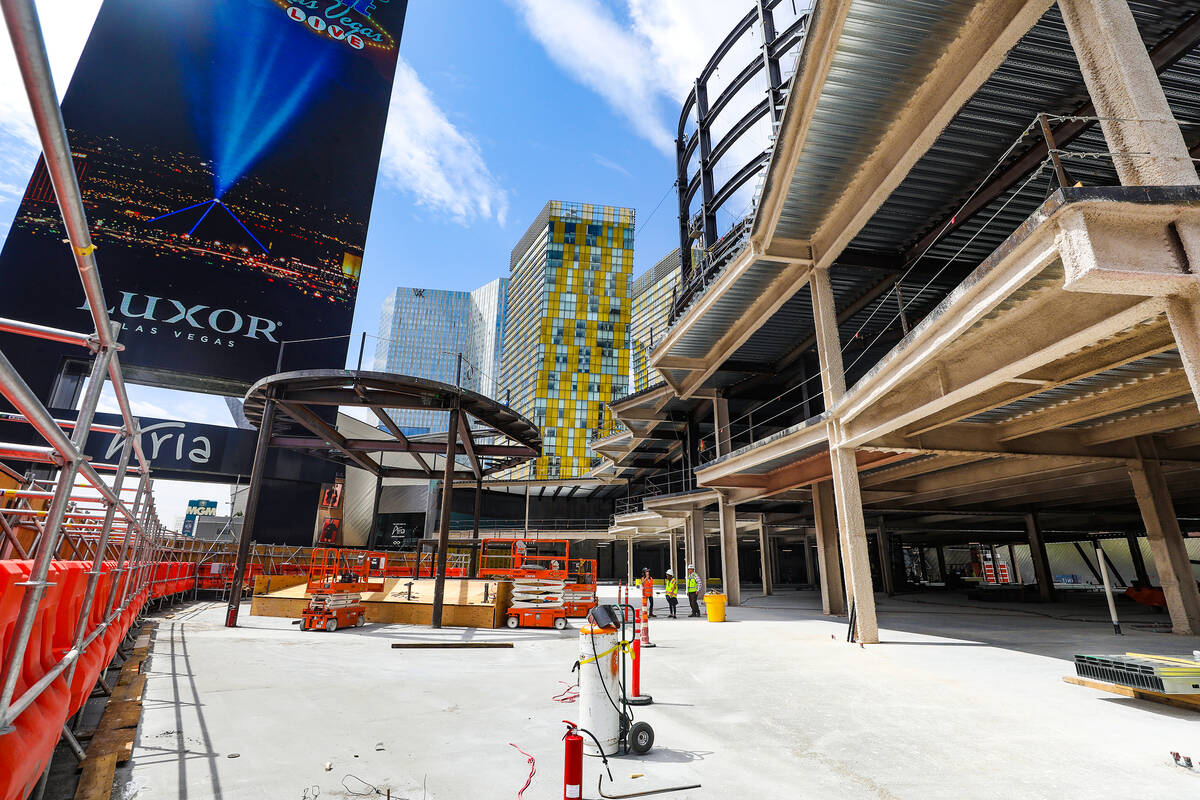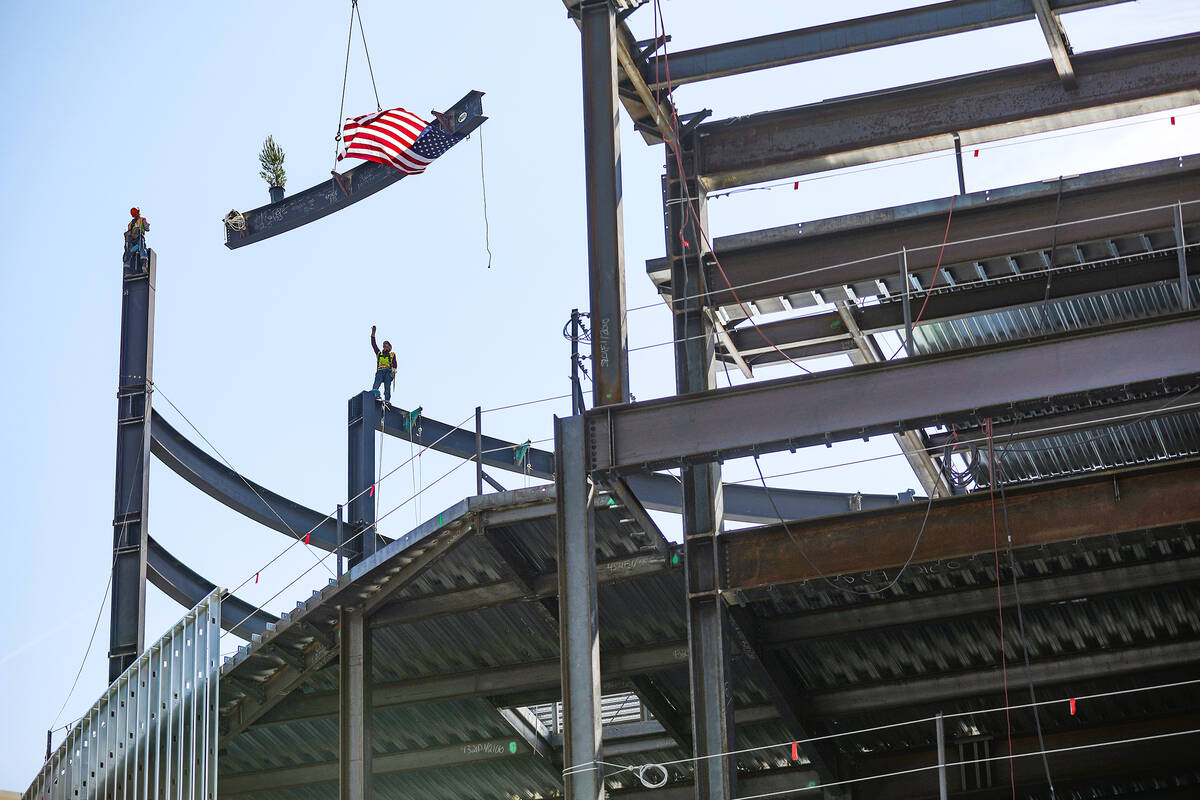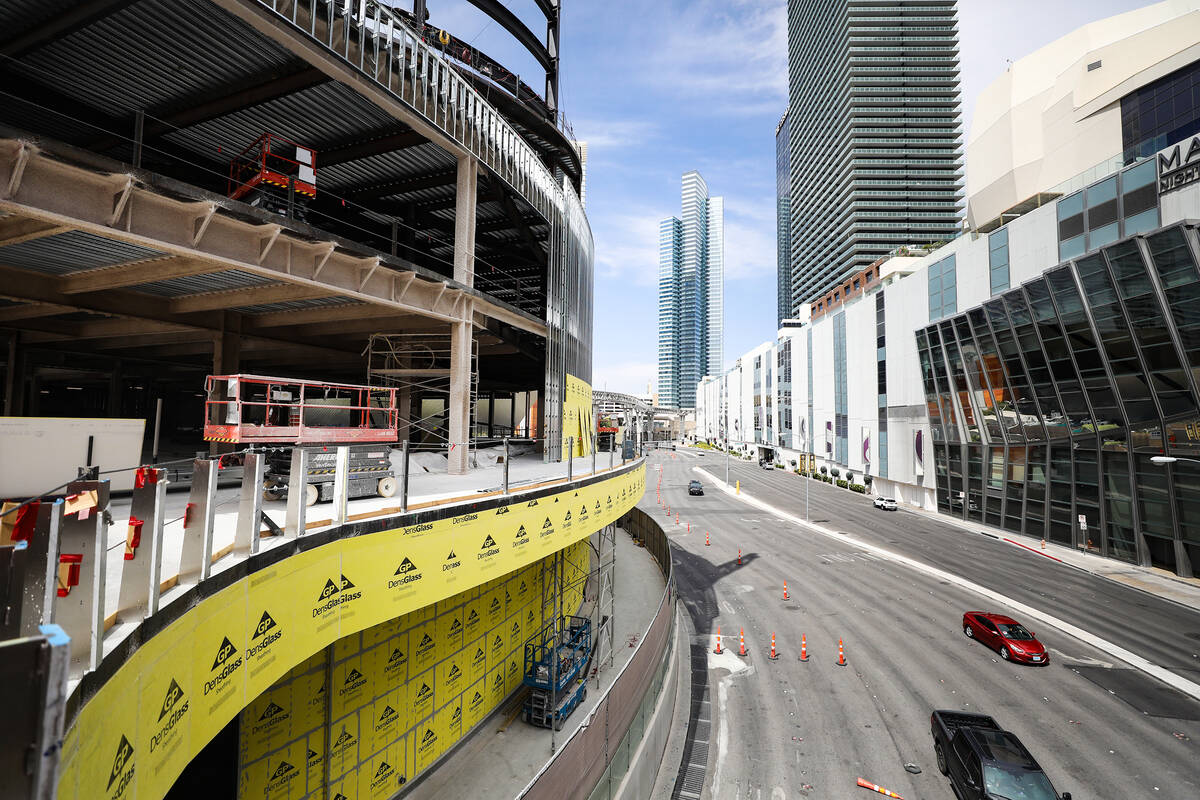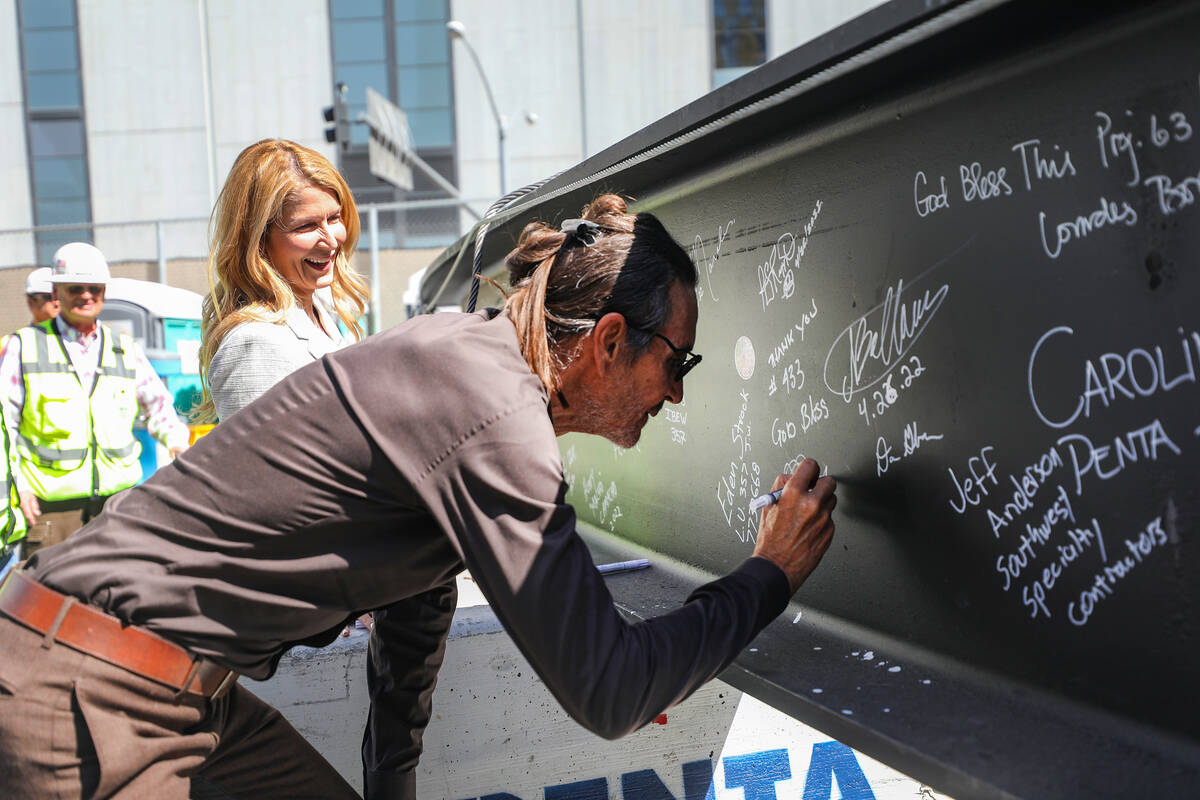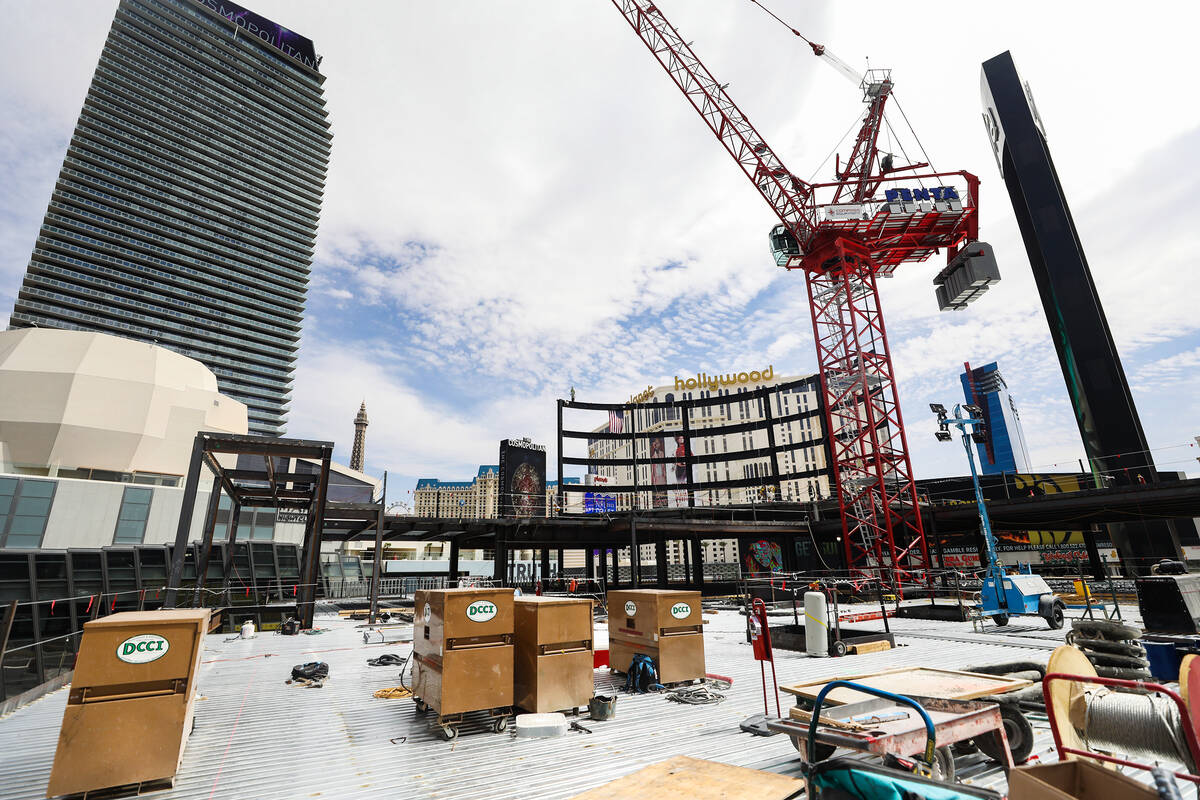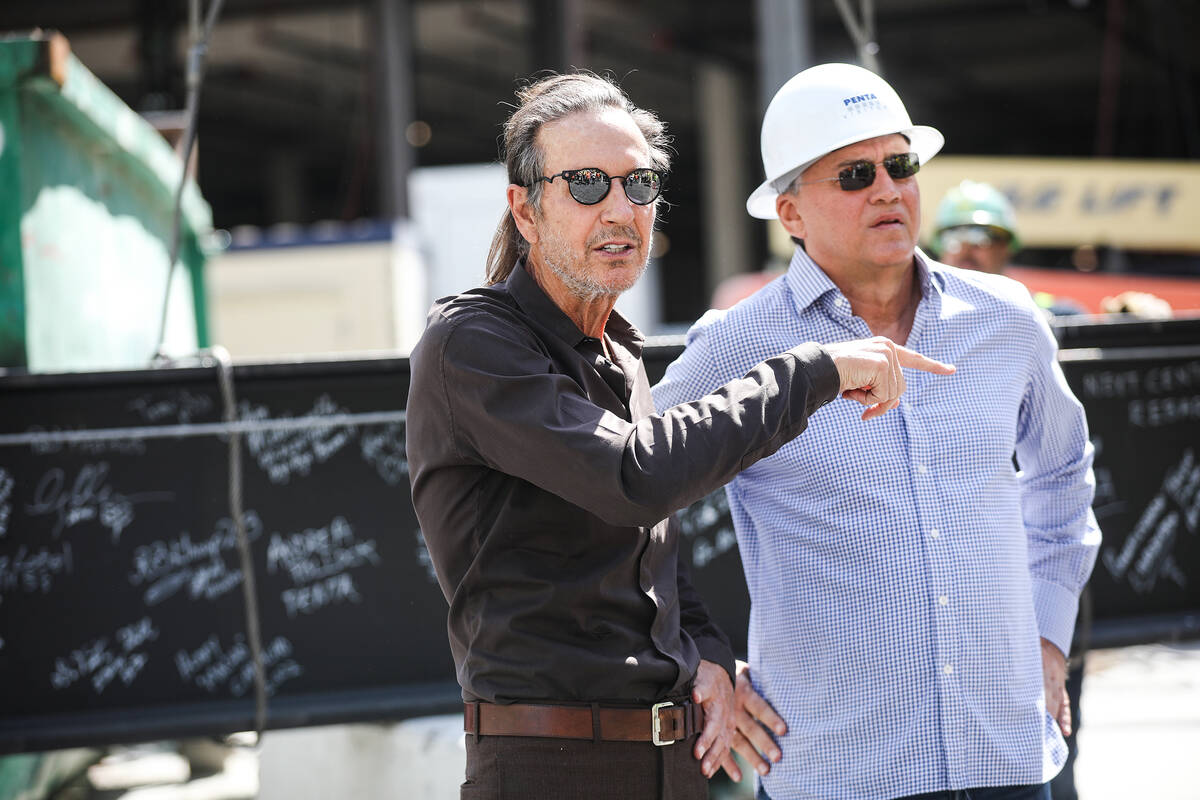Las Vegas developer bringing more retail to Strip
Las Vegas is known for its towering hotel-casinos and as a rowdy party spot. But as locals and tourists know, there are also plenty of places to shop.
The Strip has big indoor malls, open-air retail venues and stores inside resorts. Now, one more place to shop is under construction in the famed casino corridor.
Project63, a four-story retail complex at the southwest corner of Las Vegas Boulevard and Harmon Avenue, held a “topping-off” ceremony Tuesday. Standing atop the structure, two ironworkers connected its final steel beam after a crane hoisted it up to them.
Las Vegas developer Brett Torino, who is partnering on the project with New York’s Flag Luxury Group, said he expects the first wave of retail space to be completed in October.
Torino and Flag Luxury purchased the 2-acre site last year for about $80 million. The parcel had been home to the never-finished, structurally flawed Harmon hotel tower, which was dismantled several years ago.
The partners also developed a three-story retail complex at the northeast corner of Las Vegas Boulevard and Harmon about a decade ago. Torino acquired that site, which spans a little over 2 acres, at a Clark County auction for $25 million in 2010, after the real estate market had crashed.
Torino spoke with the Review-Journal at his new project site before the topping-off ceremony. The interview has been edited for length and clarity.
Las Vegas Review-Journal: What percentage of the first phase is built so far, not including tenant improvements?
Brett Torino: The thing that’s deceiving is that we have three levels of retrofit that we had to do underneath. That was a massive undertaking. If you throw that in the mix, I would say we’re 55, 60 percent of the way through. There were some issues that we had to get resolved with the county. A lot of the old pilings that were in here, the footings, they all had to be tested.
What kind of lingering issues were there with the site stemming from the takedown of the Harmon?
We had to go in and remove concrete off of beams, we had to dig around footings and columns, and we had to do destructive testing. We had to bring in massive beams to support the top structure. And then we put the pylons under massive amounts of pressure, and that’s destructive testing to see if the thing’s going to blow up when you put it under pressure. And it didn’t. But we had to uncover a lot of what you couldn’t see — to look at the rebar, and how the rebar was tied off, and how it was sized. We had to go through all of that for a long period of time, probably six months.
What percentage of the project is pre-leased right now?
I would say we’ve got to be pushing 80 percent.
And these are signed, executed leases?
Almost. They’re large companies, they’re substantial companies. They’ve been through their credit committees, they’ve been through the board-level decisions. Other people we have relationships with, they’re solid; they’re coming.
Can you talk about any of the tenants you’ve signed so far?
No, and the reason that we don’t is that at least five of our tenants are what they refer to as a flagship opportunity. They want to make their own announcements. We don’t want to get in their way.
What would you say to the average person who says, ‘Why does the Strip need one more retail project?’ Is there demand for it?
I’ve always been bullish that there’s demand for it; the type of demand changes over time because the nature of retail is changing over time. When I built my first project on the Strip, which was almost 30 years ago, people were out there pumping retail. Today they’re not only pumping retail, but they’re pumping exposure because we get a lot of people walking by these projects and up and down the Strip.
I know rents on the Strip are very big for retailers and others. Do you think retailers are OK with losing money at a location on the Strip because they more than make up for it with exposure to tourists and they boost sales outside Las Vegas?
It’s still a business, and people aren’t going to move in here to lose money. But what they do have is a level of confidence that they’re going to be able to achieve sales that they’re normally not achieving off the Strip. Our tenants here, I know what they’re projecting their numbers to be; they’re substantial numbers, and they’ll get those sales because of the number of bodies that are walking by.
You bought this site for $80 million, a huge valuation, and at the time the economy was still coming out of the pandemic. Unemployment was high, visitor totals were down. Did you have any hesitation about doing a project on the Strip focused on tourism at a time when the tourism market was hit so hard?
When I did my largest acquisitions on the Strip, it was one month after 9/11, and the Strip was dead. That took a set of kneecaps, when everybody else is saying, ‘Are you out of your mind?’
When we bought the Harmon corner, I walked into an auditorium of 600 people at the county; I was the only bidder. Everything was dead; nobody expected anybody to do anything. You’re building a three-story commercial project and the economy’s dead and no one’s on the Strip. You really gotta believe in something, and I’ve always believed in Las Vegas.
This was no different. Thirty years later from my first acquisition I can tell you I didn’t feel as nervous as the first one. You’ve been around, you’ve done it, and this seemed right. We knew that we were going to get through COVID, and when we got through COVID you could just feel that this town was going to take off, because it has before. We’re so resilient as an economy. That’s what we believed in.
Contact Eli Segall at esegall@reviewjournal.com or 702-383-0342. Follow @eli_segall on Twitter.



